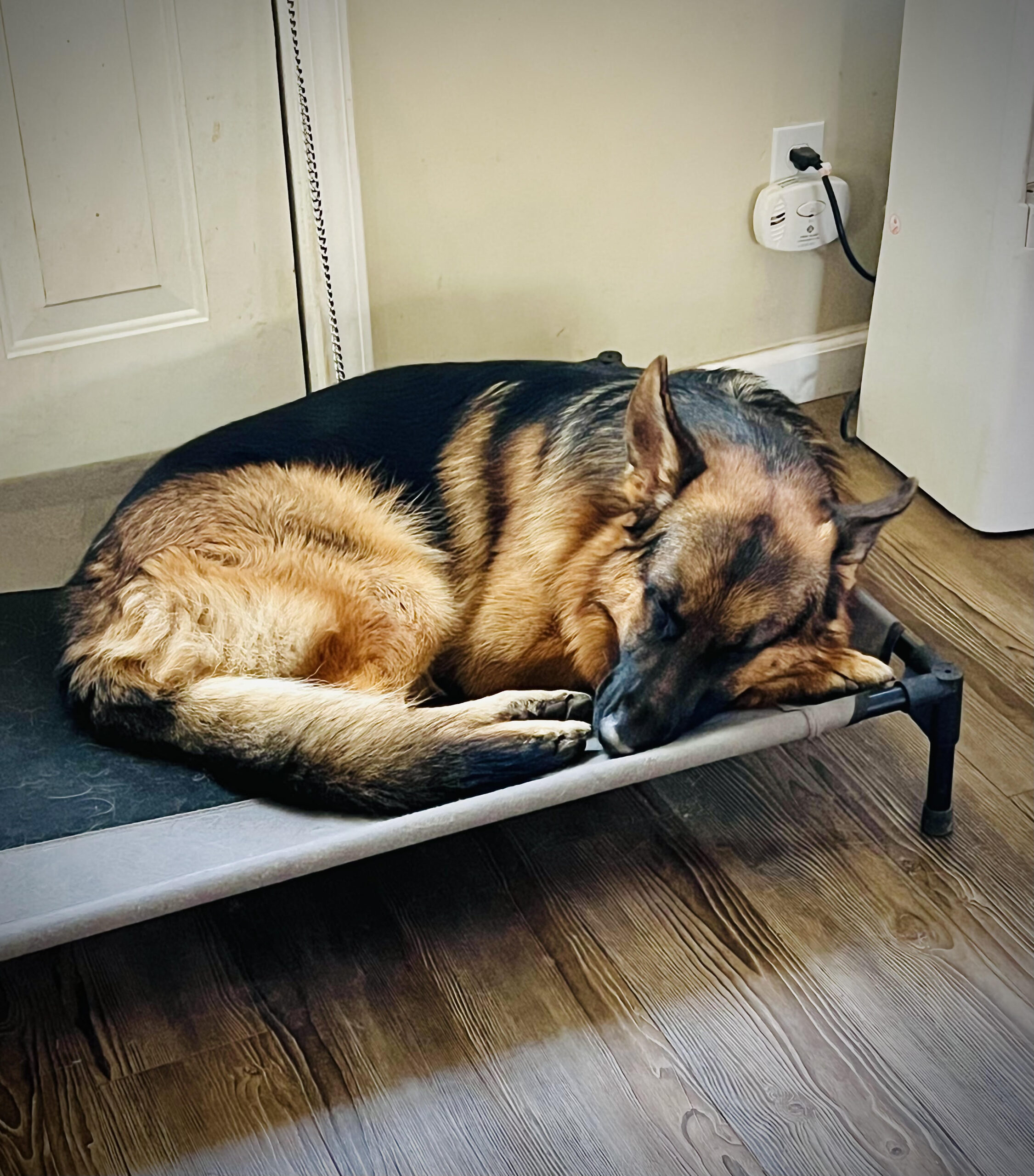Odyssey Dog Training
NEWSLETTER
December 28, 2022
Balancing the needs of the dog
I often see a dog and owner butt heads due to a difference in opinion of what should be happening. While the human member thinks it is best to be relaxing on the couch, the dog thinks it is best to be doing zoomies and barking out the window. Some dogs may incorporate quickly into a household routine, but others may need more instruction and guidance to understand what is expected.
We should start this discussion by considering first if the dog is living in a state of depletion where needs are not being met. A high-drive border collie getting by on a daily walk around the block cannot be held to the expectation of relaxing at any point. Meeting the individual dog’s needs has to be addressed first.
In general, all dogs will need a balance of mental and physical exercise, on top of meeting their needs for proper nutrition and medical care. Every dog’s individual daily quota for physical and mental exercise may vary, but I have created a visual example of what those needs might look like for the average dog via the graph below:
Some dogs may need a significantly larger amount of physical exercise, while others will benefit from reduced activity, but increased mental stimulation. Older dogs or dogs recovering from injuries are a good example. Feel free to alter the visual to represent you and your dog more accurately.
The important takeaway is that a consideration must be made as to whether the dog’s needs are being met before holding them to the expectation of falling into a daily rhythm.
Establishing the correct mindset
Once we have concluded that the dog’s needs are being appropriately met on a regular basis, we can take a look at what mindset we expect the dog to be in during various portions of the day. The idea is that the routine may change, but the dog understands through various environmental cues that a certain mental state is required.
An example of this presents itself as I am writing this newsletter. Sitting and writing at my computer has become an indicator to my dogs that it is time to relax. They aren’t required to hold any command, and they aren’t expecting playtime or interaction with me. This has developed overtime, however, and has not always been the case.
Some of these rhythms may evolve naturally, while others will require a more structured training plan to implement. If you have a goal for your dog to be relaxed during a certain activity or time of day, start by helping your dog get into the appropriate mindset.
I don’t tend to use a ton of food if I am aiming for a relaxed dog, as for many very food-motivated dogs, this will only serve to keep them “ON” and create a dog that is more amped up. For a young dog, or one that may be new to your household, I will typically start by having them on a leash and practicing what’s known as the “sit on the dog” technique. Essentially the human end of the leash remains calm and either keeps their foot on the leash, or tethers it to a sturdy item. Patiently wait for calm behaviors, which can be encouraged through calm pets, or verbal recognition. Food can be used here, but I tend to avoid it for this activity as described earlier on. Do what is in the best interest of your dog.
Note that in order to create the mindset you expect of your dog, you must also reflect that mindset. Dogs are very intuitive and pay attention to our body language, breathing, facial expressions, and other indicators of how we are feeling. You can help to facilitate the correct mindset in your dog by starting out there yourself.
Make sure to also create times in the day where the dog is able to be wild and active. Distinct cues can help to create clarity for the dog to understand when this might be expected. A good example might be when your dog gets excited as you grab their leash and collar, knowing a walk is soon to follow!
Enforcing the desired and appropriate behaviors
You may find that starting out in the correct mindset isn’t always enough to encourage your dog to do the same. Determine what expectation you have for your dog, then enforce the behaviors that fit within that window.
If you expect relaxation while you sit on the couch, but your dog continues to bring you a ball, [after considering needs for mental/physical exercise are met] ask for a down or place command. Give your dog options for what behaviors are acceptable at this time. If the dog continues to push boundaries, you can move on to putting a leash on the dog, or having them go to a separate room or crate to relax.
Conversely, if you are training for an active sport, or playing fetch in the backyard, you might choose to end the game if the dog isn’t in the right mindset.
Summary
Make sure you are meeting your dog’s overall needs for proper nutrition, medical care, mental/physical exercise, and rest/relaxation. These will look different for every dog.
Establish the mindset before holding your dog to a certain expectation. Reflect the mindset you desire from your dog by getting into that mindset yourself.
Develop a set of behaviors that fit into the expectation you have for your dog. Teach and enforce these behaviors so the dog understands that you will follow through.
If you are looking for ways to establish a rhythm and proper mindset with your dog, send me an email at odysseydogtraining@gmail.com!
947-225-1780

